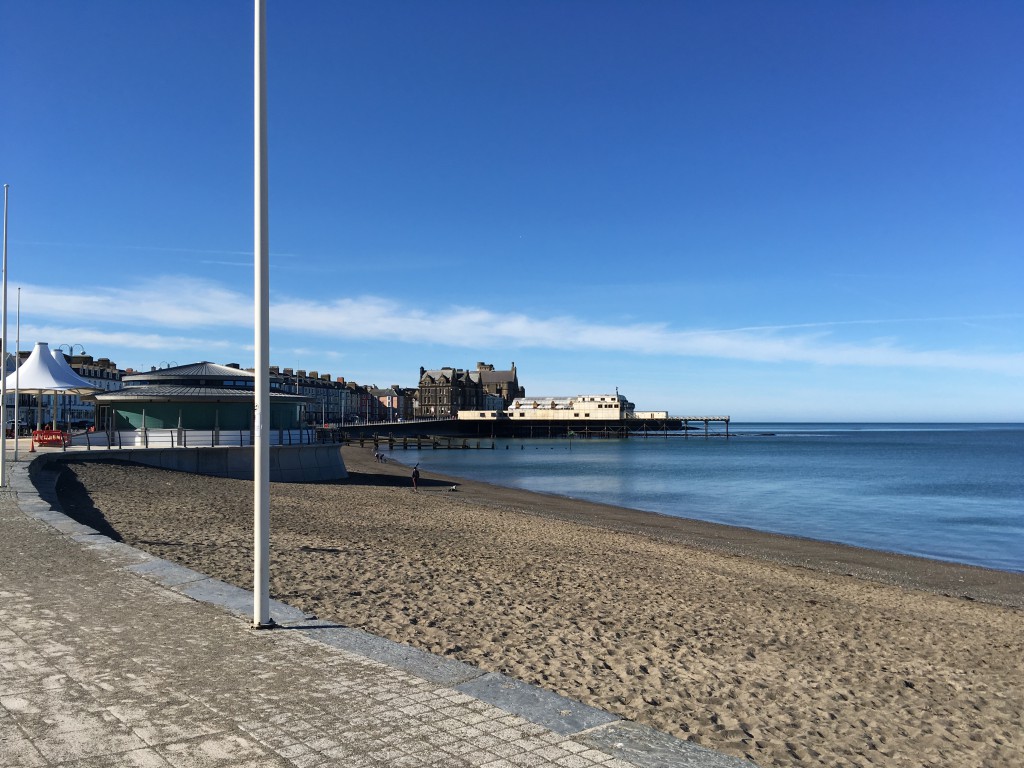
April 28, 2016, by Lucy
April showers… of snow?
As we have previously explored on this blog, sometimes it is not the intensity or severity of weather that makes an event extreme, but its timing. This week many people have been taken by surprise at the falls of snow around the UK (as pictured in the feature image © Nigel Brown, geograph), some music fans interpreting the snow as a cosmic sign from Prince, one of his songs being, Sometimes it Snows in April. The Independent has gathered together a gallery of the late April snow.
Snow in April is not actually very unusual in the UK. According to the Met Office, ‘based on records from 1981 to 2010 the UK average is for 2.3 days of snow in April, which is more than the 1.7 days for an average November. Whilst the beginning of April is more likely to be white than the end of the month, there have been a number of notable snow events this late on’. The Met Office used the example of significant snowfall from 24th to 28th April 1981 but I thought I would look further back in history to see if we discovered any notable late April snow events during our archival research.
As it happens this week I have been finishing looking at the diary of John Davies which I started to consult last week at the National Library of Wales during a visit to Aberystwyth. Fortunately for James and I, the weather last week was more like summer than winter making our trip to catch up with the Welsh team all the more enjoyable.
However, as John, a bookbinder and cobbler of Llanfihangel Ystrad, Cardigan, recorded, the spring of 1797 was rather chilly with some snow:
- April 2 – cold with showers of hail
- April 3 – snow in the morning, cold all day
- April 9 – very cold
- April 10 – very cold
- April 16 – surprising cold every day
- April 23 – very cold and windy
- April 26 – very rainy all day and very cold with flood
- May 3 – high wind with showers of hail, extream cold
- May 4 – extream cold
- May 7 – very very cold
- May 9 – very cold & windy
- May 10 – extream cold & windy
- May 11 – very cold weather, uncommon cold with some rain (National Library of Wales, MS 12350A)
From the diary of Peter Pegge-Burnell we know that the weather was rather similar in Winkburn, Nottinghamshire:
3 April – rain and snow, wheat crops looks very unpromising. Cold and showers during the remainder of the month, a very backward spring. Very long winter & a vast deal of fodder consumed – sheep in general very poor & backward – no grass (Nottinghamshire Archives, DD/CW/8c/5/20)
Heavier falls
Heavier falls of late April snow fell in 1767 at Raveningham, Norfolk:
‘20th April 1767 – hail’d and snow for several days & was as cold as at xmas’ (Norfolk Record Office, PD 645/1).
And in 1808 in Nottinghamshire as recorded by Robert Lowe in Oxton:
- 19 April – snowed & raind most of the day was at home, wind N
- 20 April – very cold, wind E
- 21 April – snow’d most all night & most of the day it was 4 inches deep, wind NE very cold
- 22 April – raind most of day, went part of the way to Balkor returned on acct of rain
- 27 April – very cold day, wind N by E
- 28 April – very cold with some snow & rain, wind N by E, then N (Nottinghamshire Archives, DD/SK/217/12).
And Peter Pegge-Burnell in Winkburn:
- April 20 – a most severe frost, snow lay on the milk? Still – began to snow again about 10 night & continued most of the 21
- April 21 – of what a morn still snowing & ? most sad to behold in short I do not remember such a morn & fore noon so late in April, was under the necessity of fetch the ewes & lambs up to prevent them being starved or blown over
- April 22 – Black & cold flying hail and rain, frost at night
- April 23 – hail, storm & rain very heavy, rained most of this night & part of the next morn
- April 24 – a great flood again in our meadows – wind strong west by north
- April 25 – a very cold black day strong ice this morn
- April 26 – black cold morn after do rather milder in high wind became north again
- April 27 – a dismal cold black day some flying showers – sure such an unfavourable season was never before known
- April 28-29 – two ? such days wind very cold
- April 30 – only day at all like April – this a most unkind month (Nottinghamshire Archives, DD/CW/8c/5/26).
In 1919 Captain Thomas Powell Lewis at Llanerchaeron recorded in his fishing diary:
‘War over free to fish but March & April were wretched months. Snow, high winds, huge floods, the highest for 23 years, snow & hail 27 April, as I was canvassing with Ben Jones Alltycafan Mills against Labour there was little time to fish, Bowen was with me during March & April’ (Llanerchaeron private archive, 460148).
Weather that is mirrored by the batch books of Frears Bread Company Ltd in Leicester:
‘Week beginning 21 April – some cold showers & snowstorms NW & W winds. Week beginning 26 April – heavy snowstorms & blizzards on Sunday April 27th & sharp frost, wet & cold all the week’ (Leicestershire, Leicester and Rutland Record Office, DE1576/18/4).
Further falls in May?
Whether further snow falls in May remains to be seen. If it does it certainly wouldn’t be for the first time. Among the earliest accounts of May snows in our database is for 3 May 1698. Detailed within the account book of Elias Webb is this description of an unexpected heavy fall of snow. It’s quite difficult to read but the final lines suggest that the unseasonable snow was interpreted as a message from God:
Memorandum, Shebourne in Warwicke – That upon May the third day 1698 it being a warme morning until about ten or eleven of the clock & then a North Wind began for to blow cold & the Aire began for to look darke & bleake with clouds & about one or two in afternoon it began for to snow a ??? grate in so much that before night the ? found ground was covered over with snow and by evening the Aire was ? cloase & began for to froze and on the morrow being Wednesday morning & for end day of the Easter sessions of Warwicke hold for county as I went up to Warwick about ? of clock in the morning thaw’d upon water that I did suppose might have carried??? and whereas the front/froze path was out??? of the ? being a little dirty by reason of snow on the day before and dirt was soo hard frozen that a man might have walked upon it without making noise? Little or no impression with his froze I thought it worthy of my observance from for to enter it in this place for??? the Great Lord of Heaven & earth hath reserved such a power in his hand that he can doth att his pleasure send a colde winterly season in the midst of the spring (Nottinghamshire Archives, DD/E/117/1).
During the course of our archival research we have found that church records are particularly useful sources for records of May snowfall:
In 1731, ‘May the 2nd, a snowe day’ in Calverton, Nottinghamshire (Nottinghamshire Archives, M/5410).
In 1802 at Baslow, Derbyshire, ‘Calver cotton mill belongin to Messrs Gordon was destroyed by fire on 17th day of May 1802. Also on the same morning a snow fell from 2 to 3 inches deep’ (Derbyshire Record Office, D2380/A/PI/1/5).
And in 1821 on 26 May at Great Longstone, Derbyshire, ‘there was a very heavy snow fall this morning so much as to cover the ground completely… with a very strong frost’ (Derbyshire Record Office, D2373/A/PW/1/2).
We’ve uncovered very little material relating to late spring or even early summer snowfall having significant impacts, but it would seem that, as was the case this week, it did usually come as a bit of a surprise!
Further reading
John Davies’ diary has been digitised and is available to view from the National Library of Wales website.


Lucy, we had snow and hail in Ceredigion yesterday (27th), just as Col Thomas Powell Lewis described at Llanerchaeron in 1919…there’s also an election campaign on here in Wales at the moment! The Cambrian mountains were white this morning as I drove up to Aberystwyth.
I remember snow in late April in 1999. I was teaching on an undergraduate field trip in Snowdonia, a good covering of snow at Cwm Idwal.
Thanks Sarah, undergraduate fieldtrips always have great weather! – hope the sunshine has returned to Aberystwyth today and for the Bank Holiday weekend. Lucy.
Have just remembered a newspaper cutting I came across in the Chain Papers from Abergavenny in the NLW: A letter to The Times from Albert Hartshorne in Pinner on May 22nd 1867
‘Sir, – It may be interesting to some of your readers to know that between 10 and 11 o’clock this morning there were two falls of snow here, lasting each about seven minutes, and accompanied by hail in both cases, the wind being at the time N. W. At 11.30 the wind became due north, blowing very strongly, and a heavy snowstorm came on which seemed very general in this district. It lasted 27 minutes…’
Good weather memory Sarah!